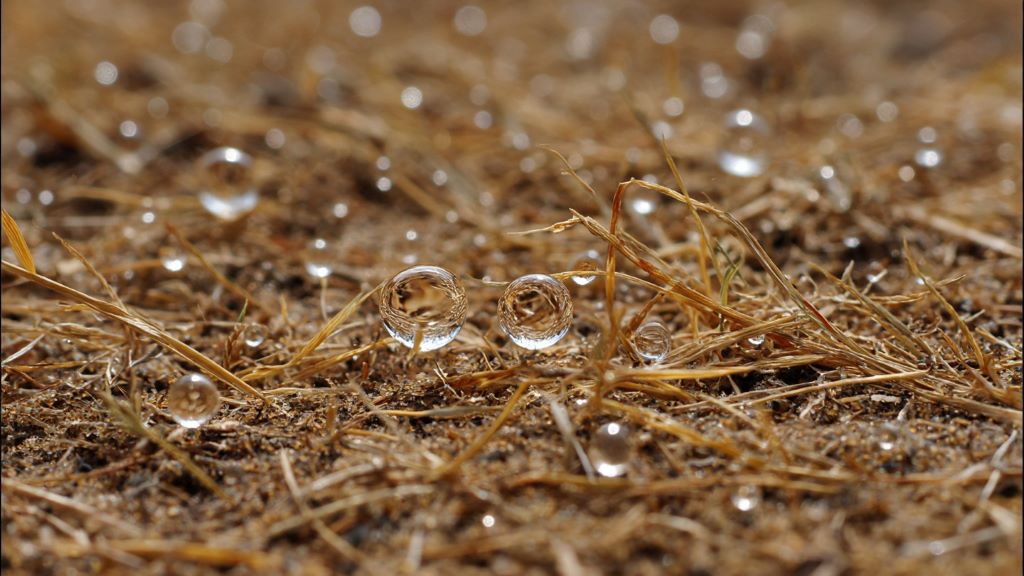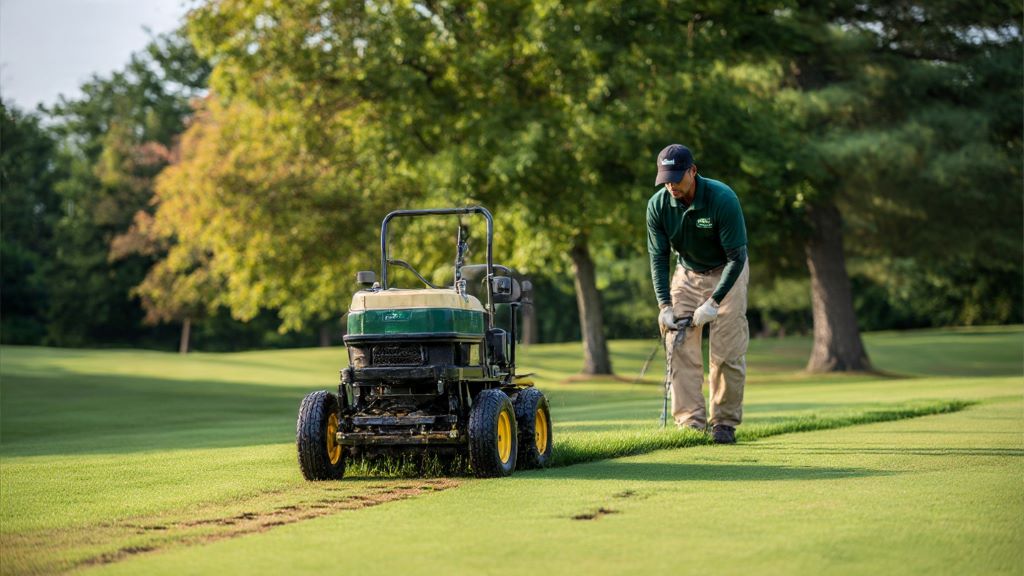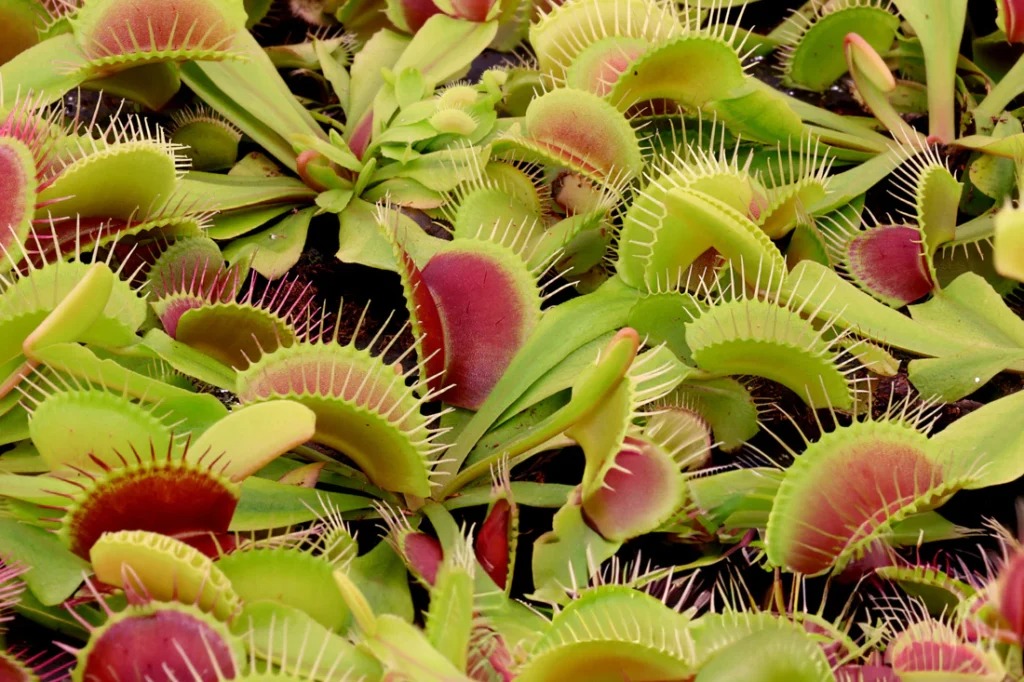Water repellent soil can turn lawn care into a frustrating challenge. When water beads up and runs off instead of soaking in, your grass suffers despite your best watering efforts. This common problem affects lawns across the country, leaving homeowners puzzled about why their irrigation systems seem ineffective. Understanding how to identify and treat hydrophobic soil is essential for maintaining a lush, healthy lawn. Boyers Lawn Care specializes in diagnosing and treating these challenging lawn conditions, helping homeowners restore their grass to its full potential.
Understanding Water Repellent Soil
Water repellent soil, also known as hydrophobic soil, occurs when organic compounds coat soil particles and prevent water absorption. This condition creates a waxy barrier that causes water to pool on the surface or run off completely. The soil literally repels moisture instead of welcoming it. This phenomenon most commonly develops in sandy soils but can affect any soil type under certain conditions.
Several factors contribute to this problem. Dry conditions combined with organic matter decomposition create waxy substances that coat soil particles. Additionally, certain fungi produce hydrophobic compounds as they break down organic material. When soil remains dry for extended periods, these water-repelling properties intensify. Understanding what are the possible problems with bare patches in an irrigated lawn helps identify whether water repellency might be causing your lawn troubles. These bare spots often appear in areas where water cannot penetrate the soil surface, leaving grass roots without essential moisture.
Signs Your Lawn Has Water Repellent Soil
Recognizing hydrophobic soil early allows for faster intervention. The most obvious sign is water pooling on the surface during irrigation or rainfall. You might notice water running off slopes immediately rather than soaking in gradually. Another telltale indicator is uneven moisture distribution, where some areas stay bone dry while others become waterlogged.
Dry patches that persist despite regular watering signal potential water repellency. These areas often feel hard and crusty to the touch. When you dig into the soil, the top layer appears dusty and dry even after watering. Furthermore, grass in affected areas turns brown and struggles to grow, creating unsightly patches throughout your lawn.
Testing for water repellency is straightforward. Simply place a few drops of water on the soil surface. If the water beads up and sits on top for several minutes instead of absorbing within seconds, you have hydrophobic soil. This simple test provides immediate confirmation of the problem.
Causes of Hydrophobic Soil in Lawns
Multiple factors contribute to water repellent conditions. Prolonged dry periods allow organic matter to decompose without adequate moisture, producing waxy byproducts. These compounds attach to soil particles and create water-resistant coatings. Sandy soils are particularly susceptible because their large particles provide more surface area for these coatings to form.
Thatch buildup exacerbates the problem significantly. When dead grass accumulates faster than it decomposes, it creates a thick layer that blocks water penetration. This organic matter breaks down into hydrophobic compounds, especially during hot, dry weather. According to research from the University of California Agriculture and Natural Resources, excessive thatch combined with drought conditions creates ideal circumstances for hydrophobic soil development.
Certain soil amendments and organic materials can also contribute. Composted bark, peat moss, and some mulches contain natural waxes that become problematic when soil dries out. Even beneficial fungi, while essential for soil health, produce hydrophobic substances during decomposition processes. Therefore, understanding these causes helps prevent future occurrences.
Effective Treatment Methods
Breaking the water-resistant barrier requires targeted strategies. The most immediate solution involves using a wetting agent, also called a soil surfactant. These products reduce water’s surface tension, allowing it to penetrate hydrophobic soil more easily. Wetting agents work like soap, breaking down the waxy coating on soil particles. Apply them according to package directions, typically mixed with water and sprayed over affected areas.
Core aeration provides another powerful treatment option. This process removes small plugs of soil, creating channels for water and air to reach grass roots. Aeration physically breaks through the water-resistant layer and improves overall soil structure. Schedule aeration when soil is slightly moist for best results. The holes allow water to bypass the hydrophobic surface layer and reach deeper soil.
Manual disruption helps in smaller areas. Using a garden fork or similar tool, pierce the soil repeatedly to create openings. This labor-intensive method works well for spot treatment of problem areas. However, it requires regular repetition to maintain effectiveness.
Adding organic matter improves soil structure over time. Work compost into the top few inches of soil to increase water retention capacity. Choose well-decomposed compost rather than fresh organic matter, which might worsen the problem. Additionally, topdressing with quality compost after aeration helps restore soil health.
Prevention Strategies
Preventing water repellent soil is easier than treating it. Maintain consistent moisture levels throughout the growing season. Regular, deep watering encourages healthy soil biology and prevents the dry conditions that promote hydrophobicity. Avoid letting your lawn become extremely dry, especially during hot summer months.
Dethatching regularly keeps organic matter from accumulating excessively. Remove thatch layers when they exceed half an inch thickness. This maintenance prevents the buildup of materials that decompose into hydrophobic compounds. Schedule dethatching during active growth periods so grass recovers quickly.
Proper irrigation practices play a crucial role. Water deeply but infrequently rather than applying light, frequent waterings. Deep watering encourages root growth and maintains soil moisture at various depths. Moreover, adjust irrigation schedules based on weather conditions and seasonal needs.
Soil testing provides valuable information about your lawn’s condition. Test pH levels and nutrient content annually. Balanced soil chemistry supports beneficial microorganisms that help break down organic matter properly. Amend soil based on test results to maintain optimal growing conditions.
Long-Term Lawn Health Management
Sustainable lawn care practices prevent recurring problems. Choose grass varieties suited to your climate and soil type. Native or adapted grasses require less intervention and tolerate local conditions better. These selections naturally resist many common lawn problems, including water repellency issues.
Fertilize appropriately to promote healthy growth without excessive thatch production. Over-fertilization encourages rapid growth that leads to thatch accumulation. Follow soil test recommendations for fertilizer application rates and timing. Balanced nutrition supports strong root systems that help grass access available water.
Monitor your lawn throughout the year for early problem signs. Regular observation allows you to address issues before they become severe. Walk your property weekly, looking for dry spots, discoloration, or unusual growth patterns. Early intervention prevents small problems from becoming major challenges.
Consider professional assistance for persistent issues. Lawn care experts can diagnose complex problems and recommend comprehensive solutions. They have access to commercial-grade products and equipment that might not be available to homeowners. Professional services often prove more cost-effective than repeated DIY attempts.
Conclusion
Water repellent soil challenges many homeowners, but effective solutions exist. Understanding the causes helps you prevent this frustrating condition from developing in your lawn. Treatment options range from simple wetting agents to comprehensive soil renovation. Prevention through proper watering, dethatching, and soil management provides the best long-term results. By implementing these strategies, you can transform hydrophobic soil into a healthy growing environment. Your lawn will reward your efforts with improved appearance, drought tolerance, and overall vigor. Remember that consistent maintenance and prompt attention to problems keep your grass looking its best throughout the year.
Frequently Asked Questions
How long does it take to cure water repellent soil?
Treatment timeline varies depending on severity. Wetting agents provide immediate improvement, allowing water penetration within hours of application. However, complete restoration of soil structure typically takes several weeks to months. Consistent watering and repeated wetting agent applications help accelerate recovery. Most lawns show significant improvement within 4-6 weeks of beginning treatment.
Can water repellent soil kill my grass?
Yes, prolonged water repellency can kill grass by preventing roots from accessing moisture. Grass plants dehydrate even when water is applied regularly because the water never reaches the root zone. Affected areas typically show brown, dead patches that expand over time. Quick intervention prevents permanent grass loss and reduces the need for reseeding.
How often should I apply wetting agents?
Initial treatment often requires monthly applications for the first growing season. Once the condition improves, reduce frequency to quarterly or seasonal applications as maintenance. Severe cases might need more frequent treatment initially. Always follow product label instructions, as different formulations have varying recommended application schedules.
Is water repellent soil the same as compacted soil?
No, these are different conditions requiring different treatments. Compacted soil has particles pressed tightly together, reducing pore space for water and air. Water repellent soil has normal structure but a waxy coating that repels moisture. Both conditions can coexist, however. Aeration helps both problems by opening soil and breaking through water-resistant layers.
Will rain fix hydrophobic soil naturally?
Light rain typically runs off without penetrating hydrophobic soil. Heavy, prolonged rainfall might eventually saturate the soil, but this process is unpredictable and inefficient. Waiting for natural resolution means extended periods of grass stress and potential permanent damage. Active treatment provides faster, more reliable results than depending on weather patterns.
Related Topics:
Unearthing Secrets: 10 Little-Known Gardening Tips You Must Know
When to Plant Peonies: A Seasonal Guide for Gardeners






